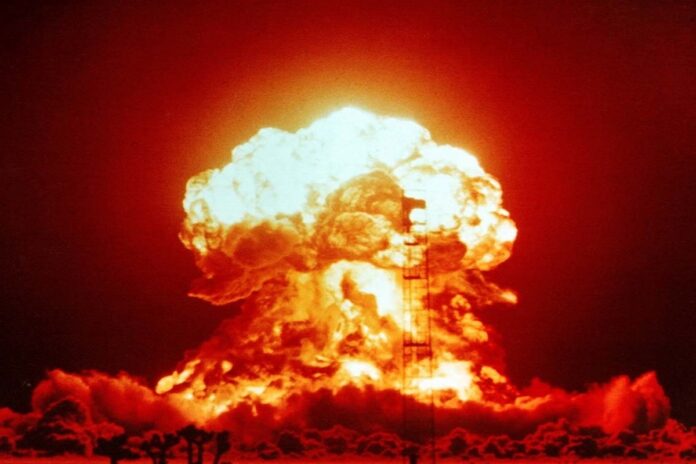
The day after signing a landmark Treaty on the Non-Proliferation of nuclear weapons, Beijing announced that it would radically modernize its atomic arsenal in 2022.
It is quite rare to record a joint statement by the five permanent members of the UN Security Council. In fact, the interests of the world politics’ protagonists are too many and too divergent. So, we should be surprised and reassured by the publication on January 3, 2022 of a document in which they undertake not to use nuclear weapons in the event that an armed conflict may break out.
We recall, for example, that until now the Us had always reserved the right to the first use of nuclear weapons in a possible war. But not all that glitters is gold.
The arduous path of denuclearization of armaments
In 1968 at the height of the arms race, the NPT, the Treaty on the Non-Proliferation of nuclear weapons, was drafted, and in the following years almost all the countries of the world joined it. It would certainly have been an enormous step forward on the road to global peace, if only … it had been respected. The treaty committed the contracting countries not to provide technologies to manufacture nuclear weapons to countries that did not possess them. The agreement between Gorbachev and Reagan in 1987 was more concrete. In fact, as a result of it the Us and USSR proceeded in a short time to the elimination of a large number of nuclear warheads. The Us has recently withdrawn from this treaty at the behest of the Trump government.
The need to lessen nuclear arsenal, who, when and how
In this context, the statement made by a spokesman of the Chinese government the day after the signing of the Treaty, i.e. on 4 January, appears rather provocative. He said without preamble and without comment that the People’s Republic of China in 2022 would begin a modernization of its nuclear arsenal! Confronted with the astonished and indignant reactions of the other signatories, Beijing replied that most nuclear weapons are held by the Us and Russia. So, let them begin to disarm and when the time comes, the Dragon will also do its part.
New winds of war threaten the world
No comment seems adequate to the situation except, perhaps, this one. In 1899, that is 15 years before the outbreak of the Great War, the First Hague Convention was signed with the aim of establishing some useful principles to limit the inhumanity of war. It was followed in 1907 by a second conference with the same intentions. This was done because it was clear to all that we were heading towards a conflict of great dimensions fueled by colonialist nationalism and economic competition. The arms race, then as now, was frenetic. It is to be hoped that history, at least in this case, will not repeat itself.
Il giorno successivo a quello della firma di un importante trattato sulla non proliferazione delle armi nucleari, Pechino annuncia che nel 2022 modernizzerà radicalmente il suo arsenale atomico.
È piuttosto raro registrare una dichiarazione congiunta dei cinque membri permanenti del Consiglio di sicurezza dell’Onu. Troppi e troppo divergenti sono gli interessi dei protagonisti della politica mondiale. Quindi dovrebbe stupirci e rassicurarci la pubblicazione del 3 gennaio 2022 di un documento in cui essi si impegnano a non fare uso di armi nucleari nel caso in cui possa scoppiare un conflitto armato.
Ricordiamo, per esempio, che fino ad oggi gli Usa si erano sempre riservati la facoltà di usare per primi le armi atomiche in una eventuale guerra. Purtroppo non è tutto oro quello che luccica.
Armi nucleari, il cammino faticoso della denuclearizzazione degli armamenti
Nel 1968, in piena corsa agli armamenti, venne stilato il TNP, il Trattato di non proliferazione delle armi nucleari, al quale aderirono negli anni successivi quasi tutti gli Stati del mondo. Sarebbe stato certamente un enorme passo avanti sulla strada della pace planetaria, se solamente … fosse stato rispettato. Il Trattato impegnava i Paesi contraenti a non fornire tecnologie utili a fabbricare ordigni nucleari agli Stati che non ne erano in possesso. Più concreto fu l’accordo fra Gorbaciov e Reagan del 1987, a seguito del quale Usa e Urss procedettero in tempi brevi all’eliminazione di un ingente numero di testate atomiche. Da quest’ultimo Trattato gli Usa si sono ritirati recentemente per volontà del governo Trump.
Armi nucleari, chi, quando e quanto deve ridurre gli arsenali?
In questo contesto appare piuttosto provocatoria la dichiarazione fatta da un portavoce del governo cinese, il giorno dopo la firma del Trattato, cioè il 4 gennaio. In essa si diceva senza preamboli e senza commenti che la Repubblica Popolare Cinese nel 2022 avrebbe dato inizio ad un ammodernamento del proprio arsenale nucleare! Di fronte alle reazioni stupite e indignate degli altri firmatari Pechino ha risposto che la stragrande maggioranza delle armi nucleari è detenuta da Usa e Russia. Quindi che incomincino loro a disarmarsi e quando sarà il momento anche il Dragone farà la sua parte.
Nuovi venti di guerra minacciano il mondo
Nessun commento appare adeguato alla situazione tranne, forse, questo. Nel 1899, cioè 15 anni prima dello scoppio della Grande Guerra, venne firmata la Prima Convenzione dell’Aja che intendeva fissare alcuni principi utili a limitare le disumanità della guerra. Ad essa, nel 1907 seguì una seconda Conferenza con gli stessi intenti. Lo si fece perché era a tutti evidente che si viaggiava verso un conflitto di grandi dimensioni alimentato da nazionalismi colonialistici e competizioni economiche. La corsa agli armamenti, allora come oggi, era frenetica. C’è da sperare che la storia, almeno in questo caso, non si ripeta.
Leggi anche:
https://La sfida di Mosca alla sovranità ucraina







